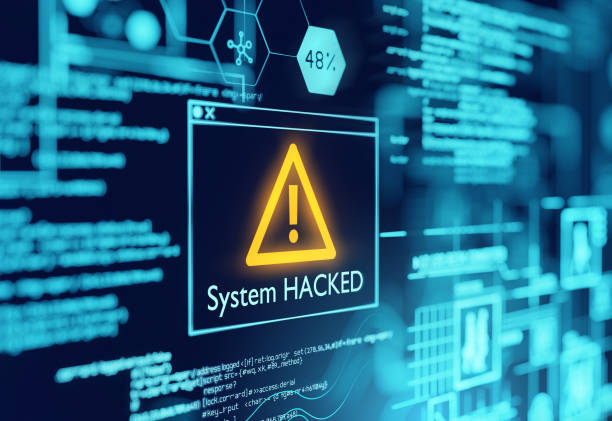
Abstract
Social engineering remains a primary attack vector in cybersecurity, often exploiting human trust rather than technical vulnerabilities. This paper presents a simulated credential harvesting attack conducted in a controlled environment to assess the effectiveness of phishing tactics leveraging malicious macro-enabled documents. The attack used pretexting, impersonation, and email spoofing to deceive the target into providing login credentials. The goal of this study is to demonstrate attack techniques, security implications, and mitigation strategies without disclosing specific entities, ensuring ethical and responsible reporting.
1. Introduction
Cyber attackers frequently exploit human psychology and trust mechanisms to bypass security controls. While modern email security solutions detect many phishing attempts, attacks using document-based macros and social engineering techniques often evade automated defenses. This study examines the methodology and effectiveness of a malicious macro-enabled document attack, focusing on the technical execution, behavioral exploitation, and preventive countermeasures.The attack was conducted as an ethical security exercise, ensuring no real victims were affected. All details presented are hypothetical, and the primary objective is to educate organizations, security teams, and individuals on recognizing and mitigating such threats.
2. Attack Methodology
2.1 Pretext and Target Selection
The simulated attack targeted a hypothetical user in an academic institution. The attacker impersonated a trusted entity, requesting the recipient to verify their identity for administrative purposes. The pretext relied on publicly available information to increase credibility, a technique commonly used in spear-phishing attacks.The following techniques were employed:
- Impersonation: The attacker used details available from open sources to craft a realistic identity.
- Email Spoofing: A legitimate-looking sender address was used to increase authenticity.
- Urgency and Authority: The message conveyed urgency to pressure the target into immediate action.
2.2 Attack Execution
2.2.1 Malicious Document Creation
A Microsoft Word macro-enabled document (.docm) was created, appearing to be an official verification form. It contained:
- A legitimate-looking header and institutional branding.
- A macro-based script that would execute upon document opening.
- A form requesting the user’s credentials, mimicking an official IT verification process.
The VBA macro was programmed to store entered credentials in a hidden file within the user's system.
2.2.2 Phishing Email and Delivery
The document was attached to a spoofed email, resembling an official institutional request. The email contained:
- Subject: "Immediate Action Required: Identity Verification Request"
- Body: A formal request instructing the recipient to download and complete the attached form to avoid service disruption.
- Attachment: "Verification_Form.docm"
To increase the attack’s effectiveness, a secondary communication channel (such as SMS or messaging apps) was used to reinforce legitimacy, mirroring real-world multi-channel phishing campaigns.
2.3 Credential Harvesting Process
When the recipient opened the document and enabled macros, a fake login prompt appeared. Upon submitting their credentials, the data was logged and stored in a hidden system directory:
C:\Users\<victim>\AppData\Roaming\credentials_log.txt
The attacker, simulating remote access, retrieved the stored credentials by remotely accessing the compromised machine.
3. Results and Observations
The simulated attack demonstrated the effectiveness of social engineering and document-based phishing in credential harvesting. Key observations included:
- High Trust in Institutional Emails
- Macro-Based Attacks Remain Viable
- Multi-Channel Reinforcement Increases Success
- Lack of Multi-Factor Authentication (MFA) as a Security Gap
4. Preventive Measures and Mitigation Strategies
To defend against such attacks, organizations and individuals should adopt the following security best practices:
4.1 Email Security Controls
- Implement DMARC, SPF, and DKIM to prevent email spoofing.
- Enable email filtering systems to flag and quarantine suspicious attachments.
4.2 User Awareness & Training
- Conduct regular security awareness training emphasizing the risks of enabling macros.
- Educate users on pretexting tactics and how to verify official communications.
4.3 Endpoint and Network Security Enhancements
- Disable macros by default in enterprise environments.
- Utilize application whitelisting to restrict unauthorized macro execution.
- Monitor user activity logs for signs of credential harvesting attempts.
4.4 Multi-Factor Authentication (MFA)
- Enforce MFA for all critical accounts to prevent unauthorized logins, even if credentials are compromised.
4.5 Reporting and Incident Response
- Establish a security incident response plan for phishing attacks.
- Encourage employees and students to report suspicious emails to IT security teams.
5. Conclusion
This study underscores the effectiveness of social engineering techniques in bypassing traditional security measures. While technical defenses such as firewalls, email security filters, and endpoint protection are essential, human factors remain the weakest link.By implementing multi-layered security controls, enforcing strict access policies, and enhancing user awareness, organizations can significantly reduce the risk of credential harvesting attacks.Future research should focus on automated detection mechanisms for document-based phishing attempts, particularly those leveraging macros, to further mitigate the risks posed by such attacks.
6. Ethical Considerations
This research follows strict ethical guidelines, ensuring:
- No real users, institutions, or identities were exploited.
- All data used in the study was simulated, with no impact on real-world users.
- The findings are shared solely for cybersecurity education and awareness.
References
[1] M. Bishop, "Computer Security: Art and Science," Addison-Wesley, 2018.
[2] OWASP, "Phishing Prevention Cheat Sheet," OWASP Foundation, 2022.
[3] NIST, "Digital Identity Guidelines," National Institute of Standards and Technology, 2021.
[4] ISO/IEC 27002, "Information Security Controls," International Organization for Standardization, 2022.
Final Note
Cybersecurity is an evolving field that requires constant learning, vigilance, and proactive defense mechanisms. This study serves as a reminder that awareness, combined with robust technical controls, is essential in defending against modern cyber threats.
